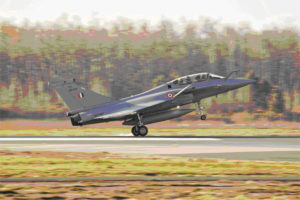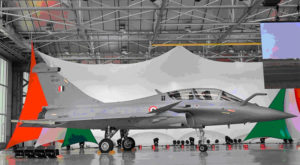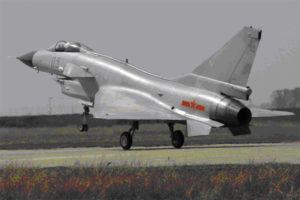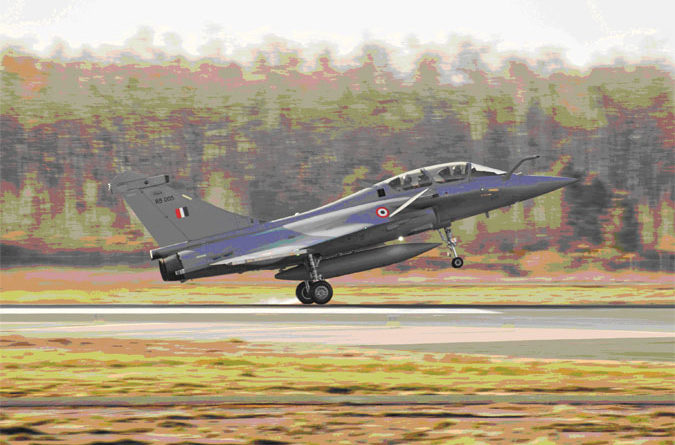Indian Air Force Receives More Rafale Fighters
February 2, 2022
The Indian Air Force (IAF) has received another batch of Rafale fighter jets after a gap of about nine months. The delivery comes at a time when Pakistan is said to be procuring J-10C fighter jets from China to counterbalance India’s Rafales.
The latest delivery includes three of the remaining four Dassault Rafales. France handed over the fighter planes at the Istres-Le Tube air station, northwest of Marseille on February 1.
The IAF is expected to fly the fighter jets back to India sometime between February 15 and February 20. The planes will be thoroughly inspected before they are brought home.

Dassault Rafale – Indian Air Force
On their way home, these fighter jets will be refueled mid-air by the UAE Air Force’s Airbus multi-role transport tankers.
These Rafale fighter jets are fully equipped with India-specific upgrades, giving them extra fangs to battle any regional foe. The last fighter plane is virtually finished with new paint and improvements, but it will not arrive until April.
When the three fighter jets arrive in India, the IAF will test the precise modifications to their satisfaction under Indian conditions, in addition to verifying the original equipment manufacturer’s claims in accordance with the agreement.
Following the inspections, work will commence on adding India-specific enhancements to the existing 32 aircraft, which operate from Ambala and Hashimara airbases. The upgrade will take place at Ambala air station, which has a maintenance and repair facility for Rafale jets in India.
French Ambassador Emmanuel Lenain had earlier stated that “despite all the hardship” suffered in the past two years due to the COVID-19 epidemic, Paris would be able to deliver all Rafales on time. “To meet the commitment, teams in France have worked extra shifts.”
Previous reports had indicated that every month, three to four Indian Rafales will be outfitted with these kits, which will be transported to India. India will receive 36 Rafale fighter jets with RB and BS tail numbers.
Further, the Rafales have been handed over to India at a time when the carrier-variant of this fighter, Rafale-M is competing against the Boeing F/A-18E/F Super Hornet Block III for India’s carrier operations aboard IAC-1 Vikrant. If Rafale M is able to make the cut, India will soon receive more Ralales, over and above the 36 previously ordered.
Even though India has already inducted over 30 Rafale fighter jets in two squadrons, what makes this new batch special is that they are equipped with India-specific enhancements even as IAF remains tightlipped about these features.
Upgraded Rafales For India
It is believed that the India-specific enhancements include long-range Meteor air-to-air missiles, low-band frequency jammers, and advanced communication systems.
The new jets may also feature more capable radio altimeters, radar warning receivers, high altitude engine start-up, synthetic aperture radar, ground moving target indicator and tracking, missile approach warning systems, and very high-frequency range decoys.
Pilots may be able to fire weapons with lightning speed thanks to helmet-mounted sights and a targeting mechanism.

IAF Rafale
As India remains sandwiched between two hostile neighbors — China and Pakistan — and parts of their borders fall in extreme-cold regions, the Indian Rafales have cold engine start capability to fly from high-altitude bases such as Leh, according to a previous report of the EurAsian Times.
Furthermore, IAF Rafales are being outfitted with the X-Guard fiber-optic towed decoy system, which enables the aircraft to avoid both air-to-air and surface-to-air missiles.
The weaponry package exceeds all other military systems in the area, allowing India to attack Pakistani jets from a safe distance. Furthermore, the SCALP air-to-ground missile will be capable of destroying virtually any target on Pakistani territory.
The Meteor, an air-to-air beyond-visual-range missile thought to be the best in its class, is installed on the fighter plane. It has a range of approximately 100 km and can shoot down hostile aircraft
The Scalp air-launched missile for Rafale jets is intended to hit high-value targets such as radars, airbases, ports, and communication centers. The missile’s long-range and low-altitude flight characteristics allow it to operate at any time of day or night.
In addition, France will equip Indian Rafale aircraft with air-to-surface Hammer all-weather smart weapons. The Hammer is a fire-and-forget weapon with a range of 70 kilometers that is highly resistant to jamming and target location errors. Without the use of GPS, it can be launched from a short-range to a longer range of 70 km.
The India-specific enhancements are all estimates and no official information has been provided by the Indian Air Force. However, the upgrades could be expected to power the Rafale with equipment that allows it to operate efficiently at its northern and western borders.
Given the protracted border dispute with China, the new Rafales are expected to provide a big boost to the IAF’s capabilities. Further, it will enhance the deterrence against Pakistan which has already been unnerved ever since India received its first batch of French-made fighter jets.
Pakistan Buys J-10C
Pakistan has been signaling its intention to buy the J-10C fighter jets from China with the objective of creating a balance of power with the IAF. Earlier this year, it had announced that a flypast of the Chinese fighter would be conducted during the Pakistan Day parade on March 23, as previously reported by the EurAsian Times.
Even though there has been no official confirmation by the Pakistan Air Force (PAF) on the matter, observers say that a potential deal could not be ruled out.

Chengdu 10
The J-10 is a small multi-role fighter that can fly in all weather. The single-engine aircraft was built for China’s People’s Liberation Army Air Force to carry out strike and air-to-air combat operations.
While Pakistan currently operates the JF-17 fighters developed jointly with China, the concerns regarding its engine could be a reason behind PAF’s interest in the Chengdu J-10.
Courtesy: Eurasian Times

